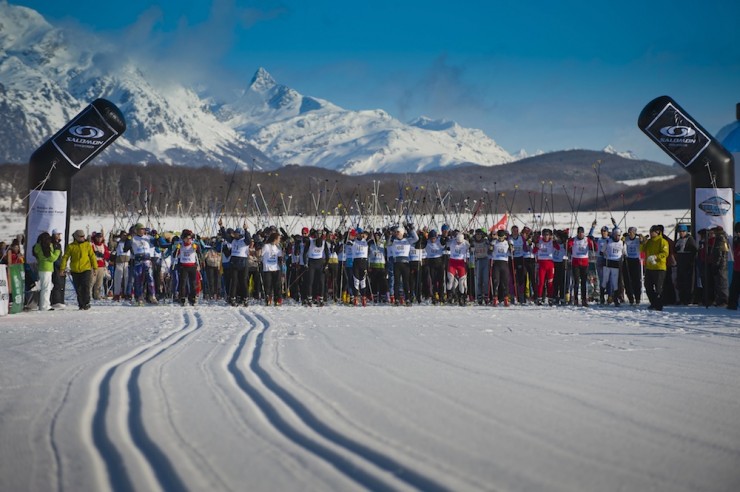
By Matt Muir
Editor’s Note: Colorado-based writer Matt Muir contributed the following article after his most recent visit to Argentina in August. He takes in-depth look at the nation’s ski marathons, the 21-kilometer Marchablanca and its new sister race, the 42 k Ushuaia Loppet. Both are currently on the Worldloppet’s associate list and are pending approval as Worldloppet races, which would mean big things for cross-country skiing in South America.
***
Around the year 1824, General José de San Martín became disillusioned with the military revolution he led to liberate what is now Argentina, Chile and Peru from the Spanish Empire. Near the height of his authority, the General handed power to a young subordinate and sailed to Europe. Once settled, he focused on his daughter’s educación in the full Spanish language sense of the word, that is to say, her ‘formation and manners as a citizen within a civil society.’ Despite his departure, San Martín remains a hero in Argentina.
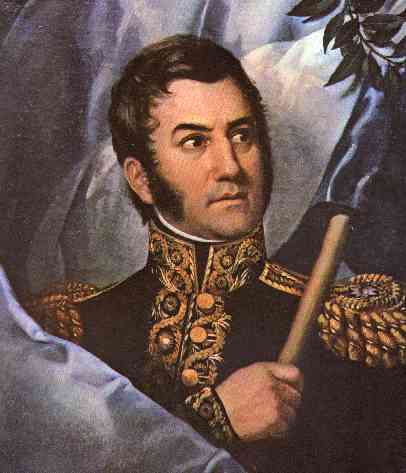
To this day, the spirit of San Martín pervades the nation. There are San Martín Societies, statues, paintings, and streets. The “Maxims of San Martín ,” written by the general for his daughter, are a sort of set of golden rules for many Argentines. On some level, there seems to be a part of the Argentine national character that sympathizes with San Martín’s relinquishment of power and departure to the continent of the colonizers.
He was a hero who fought the good fight only to realize that one corrupt system of power was being replaced by another imperfect system of rule. And so it is that the third Monday in August, near San Martín’s birthday and during the heart of the austral hemisphere winter, General San Martín Day is celebrated.
When compared to contemporary military feats, San Martín’s campaigns towered over the maneuvers of European counterparts like Napoleon. San Martín and his troops criss-crossed the Andes multiple times to engage Spanish forces in battle.
So about thirty years ago, in order to commemorate the campaigns of their liberator, a rag-tag group of “Fuegians” or locals from Argentine province of Tierra del Fuego, put on their skis on San Martín Day and skied from one side of the Andes to the other.
No doubt, on their return to Ushuaia, the southernmost city in the world and the capital of Tierra del Fuego, they shared an asado, the classic Argentine barbecue meal. In a region that is remote even today, that small group of Argentines paid tribute to San Martín with a ski traverse across a landscape that even the locals call “the end of the world.”
The Birth of the Marcha
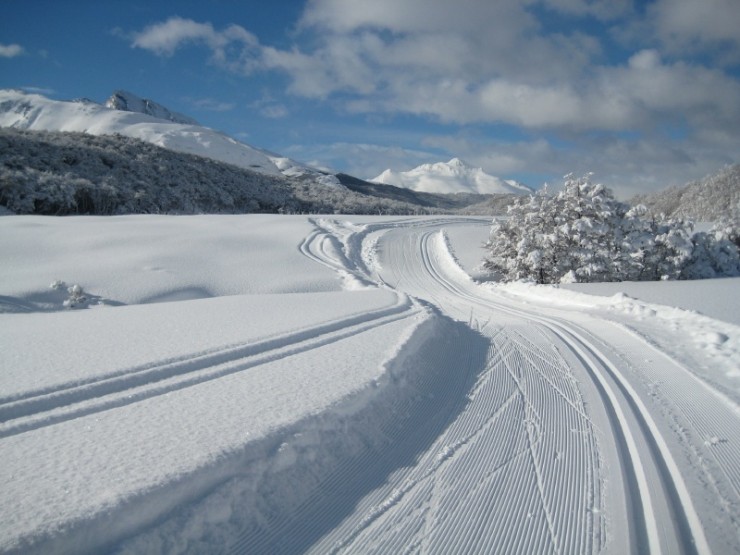
Over time, the ski tradition morphed into a marcha or ‘race-event.’ Skiers worked out a twenty-ish kilometer course in the Valley of Tierra Mayor, which lies northeast of Ushuaia. The trail goes over frozen and snowy peat bogs and through woodcutter’s corridors bored into the austral forests of Lenga, Ñire, and Guindo trees native to Tierra del Fuego.
It acquired a name, the Marchablanca, or the ‘white tour,’ and became organized by the non-profit Club Andino Ushuaia (CAU) or “Andean Club of Ushuaia.” Established in 1956 as an outgrowth of the immigration by Europeans from similarly mountainous regions, CAU is a community of mostly volunteers at the heart of Fuegian outdoor sports.
Early models of Pisten Bully snowcats arrived to the region in the 1980s and the Marchablanca’s course was groomed. A micro-boom of nordic skiers led to participation numbers of over 1,000.
One local Fuegian, Luis Argel, became the first Argentine to go to Europe and compete as a cross-country skier. A small smattering of elite skiers and biathletes from other nations started to experiment with training in the region taking advantage of snow during the northern hemisphere’s summers.
A victim of isolation in a distant corner of a developing nation, the race’s footing became tenuous and by the 1990s, logistical and financial support for the event faded and participation dropped.
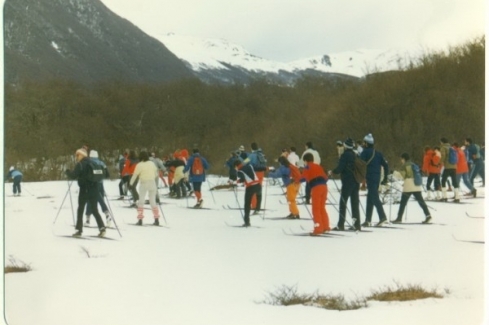
The event limped along until about 2000 when something happened. A cast of characters came onto the stage in Tierra del Fuego and each actor, many of them friends who came of age with the Marchablanca, took their place on the theater set that is cross-country skiing at the End of The World.
Despite the remoteness, the scarcity, the non-existent budgets, the lack equipment, the vacuum of awareness – despite everything – a small group of Argentines began to improvise a way forward. It was like the play of their national soccer team, the albicelestes or “sky-blue and whites;” from what appeared to be nothing, they unexpectedly improvised everything.
Pablo Valcheff skied with the CAU as a junior in the 1980s. The kids would practice skiing a few times a week, have races and even an Argentine National Championship in conjunction with the Club Andino Bariloche from mountainous-central Argentina.
One austral winter day, a Spaniard name Hugo Puig de Fabregas from the Pyrenees region visited Tierra del Fuego. By the end of Puig de Fabregas’s visit, an exchange was arranged and a handful of Argentine kids visited the Pyrenees during the northern hemisphere winter. Valcheff was one of those kids and, according to him, “It was life changing. We had to borrow money to afford it but it opened a whole new world of awareness for me.”
Valcheff’s Vision and Menci’s Legacy
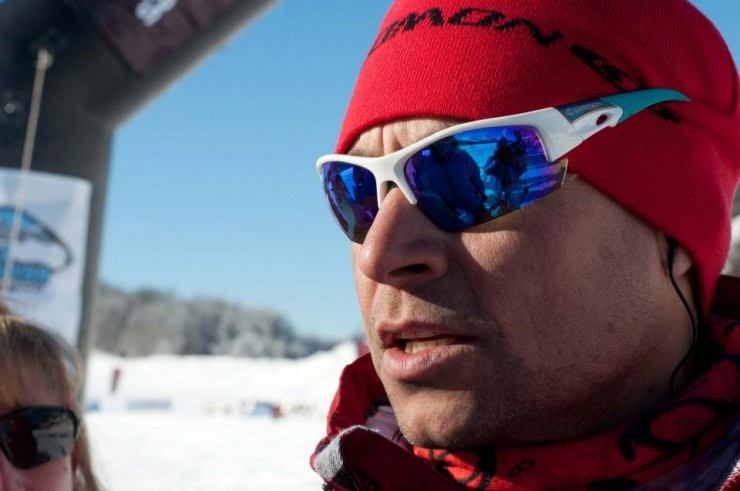
Skip forward in time and around 2000, Valcheff experienced a vision. Still an active member of the CAU but now a father as well, he saw a way to make the Marchablanca a great race, one that would be fit for a first-world country let alone a remote region of a developing nation. Valcheff runs the Marchablanca as if it were artistic expression mixed with community organizing mixed with a personal challenge to himself to make something better for his community and children. By no means though is Valcheff alone in his labor for skiing and the Marchablanca.
At age 16, Fuegian Sebastián Menci represented Argentina in the 1992 Winter Olympics in Albertville, France. One of skiing’s all-time greats, Vegard Ulvang of Norway, demolished Menci, taking some ten-plus minutes out of him in the 10 k classic race. Not long afterwards, Argentine support budgets evaporated and Menci’s career as an athlete was over.
It did not matter though, anyone who has ever known a good cross-country ski coach knows Menci. He is passion and resilience incarnate. Since those Olympics, Menci has worked for cross-country skiing in Argentina in what can only be described as a protracted and profound act of love for skiing.
In addition to his job as a physical-education teacher in the local schools, Menci coaches junior skiers. Some years there have been dozens and others just a handful as the sport has ebbed and flowed in the region.
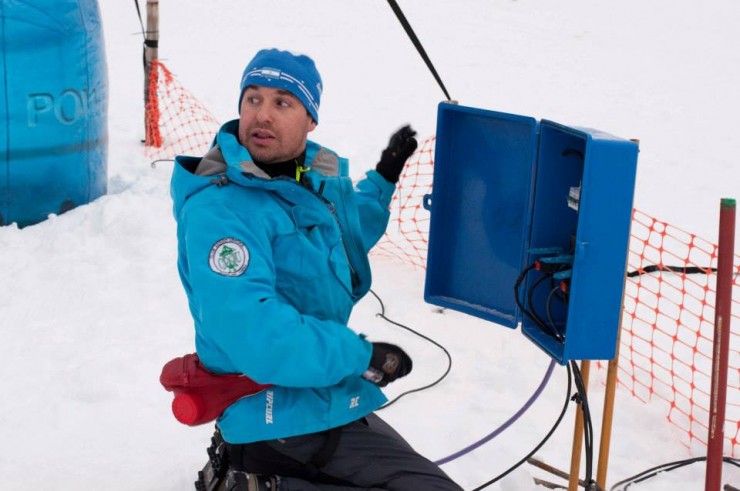
Starting around 2000, he spent three years convincing a local kid named Federico Cichero, who showed promise as a runner, to leave other sports and focus on skiing. It took countless hours to persuade the Argentine ski federation to support a multi-year plan intended to deliver Cichero to the 2014 Sochi Winter Olympics as Argentina’s most-experienced skier yet.
Last month, Cichero was named to Argentina’s Olympic roster. In the letter nominating Cichero to the upcoming Olympics, Matías Jerman, the president of the Argentine ski federation, cited Cichero’s dedication as “…an example to younger Argentines who may follow Cichero’s example…”
Menci gives of himself to the point of excess, cobbling together equipment and ever elusive funding and waxing pair after pair of skis late into the night. While Menci served as Cichero’s coach last winter in Europe, their rental-car budget ran out so they hitchhiked back and forth from 30 minutes away to the site of Nordic World Ski Championships in Val di Fiemme, Italy. When two Austrian journalists picked up Cichero one day and learned that he and his coach were bumming rides back and forth to the competition, the journalists simply laughed.
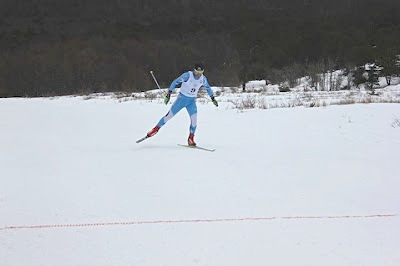
Dependency on Downhill
In addition to the organizer, the coach and the athlete, the promise of a nordic resurgence depends on institutions like Cerro Castor, the alpine area near Ushuaia. According to Cerro Castor’s manager Gaston Begue, cross-country is a “complimentary activity for us … We’ve got our hands full around here with Inter Ski in 2015 and the possibility of hosting a World Cup downhill race but we’re happy to keep working with nordic as much as we can.”
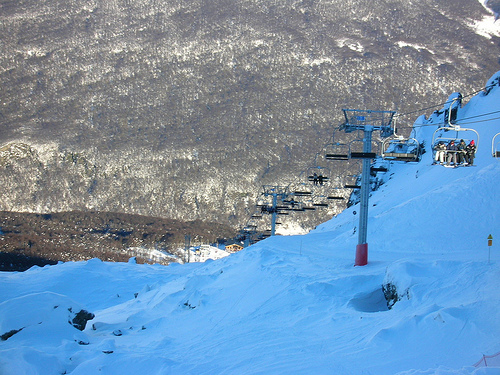
The Cerro, as it is known locally, grooms the eastern half of the Marchablanca trail with a brand-new 2013 Pisten Bully 100. Full width and tilled but firm, the machine leaves a superior snow-product on the half of the Marchablanca trail closest to the Cerro’s base area.
In contrast to the organized-and-corporate Cerro Castor, the Centro Invernal Tierra Mayor, a small “winter center” run by the Giro family, operates on tradition and passion. The center is positioned in the middle of the Marchablanca trail and Gustavo Giro grooms the western sector with his Pisten Bully in order to complete the roughly 21 k loop. As Valcheff often points out, “the Giros have cross-country running through their veins.”
A Labor of Love
Carlos Zampatti imported and retailed cross-country goods (until the current importation restrictions in Argentina made it impossible to continue) and works tirelessly on the trails at the CAU’s Francisco Jerman Nordic Ski Area overlooking the city of Ushuaia. Go to the Jerman nearly any day during the austral summer and Zampatti will be there trimming, pruning, grading, repairing, and replacing culverts and drainage channels. A former government employee, Zampatti’s familiarity with provincial bureaucracies was crucial in establishing the Marchablanca trail as a legally recognized and protected “Provincial Cross Country Ski Trail” or PIPEF in 2010.
Year after year, Zampatti pitches in to make the Marchablanca happen. In 2013, he was in the trenches shoveling snow into the two culverts that transect Argentina’s Route 3 on the Marchablanca course in order to make it fully passable without needing to remove skis.
Local skiers Nestor Urquia and Ricardo Hlopec both worked in governmental forestry divisions. Experienced in the ways of government, accustomed to formal and academic discourse, and facile with paperwork, the pair has navigated endless applications for grant funds to purchase equipment and upgrades for cross-country.
Also critical to maintaining the skiing infrastructure is current Provincial Tourism Minister, Marcelo Echazu. A skier himself, Echazu supported provincial funding for regular grooming on the Marchablanca/PIPEF trail and for the Marchablanca event.
All these people and the work of many more over 10 years combined to create a uniquely Argentine phenomenon, a mind-boggling paradox. In the middle of nowhere, it is snowy in August.
Near Ushuaia, a city with more than a few rough edges, the austral winter and natural setting are stunning. Where so many things seem loosely held together, the Marchablanca is one, beautiful, functional, organized, and modern event. To behold the Marchablanca is to behold what seems to be an impossible contradiction. It is a good thing reborn from broken and old things, reborn from almost nothing.
Below: Video from the start of the 2013 Marchablanca.
Marcha’s Quest
The event is pro… mostly. There are little things like the 30-minute delay in the start time. All the Argentines seem to know it will start late as if there were such a thing as “Argentine Standard Time” in which everything is at least thirty minutes late.
The 2013 Marchablanca champion, a visiting German named Falk Goepfert, had a little more trouble understanding the delay. Goepfert had timed his warm-up and ski prep for an 11:00 start and ended up cooling his heels for another 30 minutes. Turns out, Argentina is still not Germany. Nevertheless, the Marchablanca would be a good event in North America or Europe. And it happens where one least expects it. If the Marchablanca were a revolution, would San Martín have stayed?
The organizers knew they were onto something, and around the same time that the Marchablanca’s level of professionalism was rising, it started to seem reasonable to set a goal to qualify an event for the Worldloppet. The Worldloppet is a series of 16 prestigious ski marathons across the globe. It boasts events like the Norweigian Birkebeiner Rennet, the Gatineau Loppet in Canada, and the Sapporo Ski Marathon in Japan. Some of its events have over 10,000 participants on a single day and date back nearly a century.
In order to qualify as an event in the Worldloppet, Argentina would have to offer at least a marathon distance event (42 kilometers) on a single loop or a point-to-point course. The event would also have to have at least a thousand participants. With this in mind, Valcheff added the Ushuaia Loppet in August 2011. The Ushuaia Loppet is two laps of the 21 k Marchablanca course held the week after that event. Lacking the family friendly distance options of the Marchablanca (and the costumes), the Ushuaia Loppet attracted forty skiers in its third year.
The CAU and the organizing leadership of the two sister events aimed to keep the Loppet alive as a branch of the Marchablanca and as an eventual candidate for Worldloppet status. The thinking was that eventually, sometime between 2015 and 2020, the events could qualify for the Worldloppet.
By pure chance, in the Northern Hemisphere’s spring of 2013, the Worldloppet commission met and decided to create an “associate” category for developing ski nations.
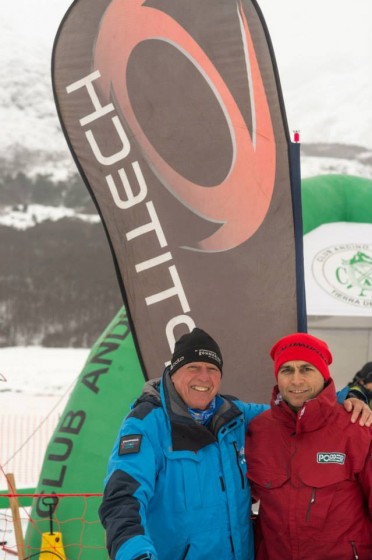
In a previous FasterSkier article, the Marchablanca and Ushuaia Loppet were mentioned several times as examples of possible “associate” races who could not meet the formal Worldloppet requirements but were still deserving of some form of support. The Worldloppet asked to inspect the Marchablanca’s 27th edition in August 2013. Echazu’s Fuegian tourism ministry issued promotional funding to the Worldloppet representative, Paddy Field, for his travel so that he could come and watch the event.
Field arrived a few days before the 2013 Marchablanca. Nearly 80, the Briton carried no cell phone nor computer, only a pen and notepad. With at least 30 years of skiing experience and as an International Ski Federation (FIS) technical delegate, Field embodies an old-school ethic. He requested only to inspect the course and to meet the chief of medical support and the chief of the race. He skied the entire 21 k loop and met the chiefs he had requested. Then he observed, inconspicuously, as if he were not even there.
The evening following the race, Field meet with Echazu, Valcheff and Daniel Catania, the president of the CAU, and stated that he would recommend the Ushuaia Loppet for Worldloppet Associate status. He especially liked the course and, after years of varied experiences all over the world, he found the medical support to be quite good. Field closed his notebook on the table in front of him. Valcheff wriggled with happiness while Catania kept the formalities going with his careful English.
When asked about the apparent positive disposition of the Worldloppet towards the Ushuaia Loppet, Field replied, “The Worldloppet events in developed nations may seem to not really need our help but in a place like this, the Worldloppet organization is obligated to help the sport and to cultivate the benefits that come along with skiing.”
Even before Field’s official visit, as soon as news of the possibilities around the Worldloppet became known in Ushuaia, the CAU’s governing commission for the Marchablanca debated whether to pursue the Worldloppet opportunity or not. The fear is that it may be over-committing to join the Worldloppet. For starters, there is a €13,000 Euro entry fee which converts to almost 100,000 Argentine pesos. The CAU does not have that kind of money lying around.
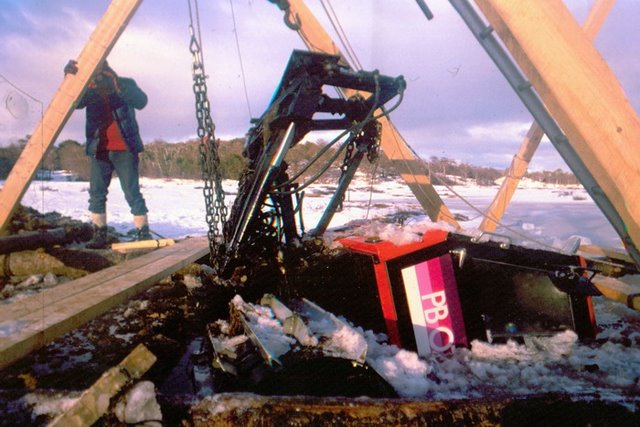
Echazu anticipated this apprehension and stated “it looks like if Worldloppet status is granted, the federal Argentine tourism authority will help with costs.” Ask anyone at the CAU though and they will all say the same thing, “governments in Argentina change. When an election comes, if this government gets voted out, the CAU will be left holding the bag.”
One idea being tossed around inside the CAU’s leadership is to draft a document, a sort of written contract to present to the government for signature. That way, if a new political party takes control, the CAU can go to the new persons in office and say, “look, this ministry agreed to support this, this institution cannot go back on its word.”
If there is unexpected pride at the achievements of the Marchablanca and Ushuaia Loppet, the flip side of pride is shame if this venture were to fail.
Race Director Valcheff says, “every single one of those banners, every one of those sponsor logos is a face to me and a relationship. Look, here’s one example. On race day, the National and Provincial Police are present, the Gendarmeria is present and the Argentine Army sends an unarmed squad with a heavy vehicle for logistical backup. You think I can walk into their offices and maintain this partnership if I look like a clown who does not keep his word? Even in Argentina, some things are serious.”
If there is unexpected pride at the achievements of the Marchablanca and Ushuaia Loppet, the flip side of pride is shame if this venture were to fail.
A man of few words in unfamiliar settings, Menci says, with emotion sneaking into his voice, “I’m sick of it, I’m tired of being the sudaca [a pejorative term for South Americans]. Everywhere we go, we’re the sudacas. You know how hard we’ve worked to get to where we are? For instance, when Fede [Cichero] earned that Cross Country World Cup start last year in Switzerland, I think we finished second-to-last, but do you know how valuable that was to us? Do you know what it took? There are tons of imperfections here but we’ve worked hard to do what we are capable of and do it right. If we have a World Loppet and people from overseas come and we fail on our end by not fulfilling expectations, I will be ashamed.”
Barrier after Barrier
Another potential problem is the current limitations on importation to Argentina, which have made new cross-country ski materials virtually impossible to purchase. In fact, different Argentine governmental bodies seem to fight even amongst themselves over importation rights.

For example, a Fuegian provincial department for sport purchased a new Pisten Bully as part of a program to get school children out on nordic skis. Yet, the $150,000-dollar snowcat has been stuck in the port of Buenos Aires where it is the object of a byzantine importation process. When asked about the topic, Tourism Minister Echazu responded, “Yeah, we will have to look at all of this.”
Catania, who has been a steady hand on the rudder of leadership at the CAU, added, “I have a friend who always says, “don’t put your umbrella up until it’s raining.” The English equivalent would be “we will cross that bridge when we come to it.” Catania’s opinion is that if Worldloppet status is granted, then things will change.
A final decision from The Worldloppet organization on the candidacy of the Ushuaia Loppet and its supporting race, the Marchablanca, for Worldloppet associate status is expected in November 2013.
The rest remains uncertain and uncertainty is familiar in Argentina, a country that has made a virtue out of necessity by responding to imperfection with improvisation, taking strength from adversity, and idolizing the ethic of transcending paradoxes—look no further than the national adoration of their all-time fútbol great, Diego Maradona. From nothing, Maradona achieved everything. A genius on the field, he is a walking tragi-comedy off the field and Argentines love him for it.
After the finish of the 2013 Marchablanca, a family was skiing on the 7 k loop groomed for the kids’ fun race. A snow-rain mix fell from gunmetal skies and low clouds. Two parents pushed and pulled a very young skier along and the older daughter skied ahead of the others with her arms and legs outstretched and her face full of joy and happiness and health all blended into a smile that spread from ear to ear and with crooked teeth. She was oblivious to the paradox surrounding her.
***
About the Author:
Matt Muir is a freelance author living in Boulder, Colo. Matt visited Tierra del Fuego in August of 2002 on a whim and has since returned every August except two. Some of his closest friends are described in this story, and he takes responsibility for all translations and interpretations from the original Spanish language utterances. As San Martín counsels, their friendship is based in Matt’s admiration and respect for them and because he can stay at their homes, eat their food, and ski in August. Read more at http://glidenordic.com.
Footnotes:
1 Maximas Para Mi Hija / Maxims for My Daughter:
Inspirarle Amor A La Verdad Y Odio A La Mentira
Inspire in her a love of truth and to detest lies
Inspirarla A Una Gran Confianza Y Amistad Pero Uniendo El Respeto
Inspire in her confidence and friendship based in respect
Estimular En Mercedes La Caridad Con Los Pobres
Encourage in Mercedes charity for the poor
Respeto Sobre La Propiedad Ajena
Respect the property of others
Acostumbrarla A Guardar Un Secreto
Train her to keep a secret
Inspirarle Sentimientos De Indulgencia Hacia Todas Las Religiones
Inspire in her tolerance for all religions
Dulzura Con Los Criados, Pobres Y Viejos
Gentleness with servants, the poor and the elderly
Qué Hable Poco Y Lo Preciso
To speak little and precisely
Acostumbrarla A Estar Formal En La Mesa
Accustom her to proper manners at the table
Amor Al Aseo Y Desprecio Al Lujo, Inspirarla Amor Por La Patria Y La Libertad
Love cleanliness and despise luxury; Inspire in her love of country and liberty

6 comments
T.Eastman
November 5, 2013 at 11:04 am
Great article Matt!
Wasn’t a winter version of the Pan-American Games held in Argentina in the late-1980s or early-1990s; and did it have any influence on XC skiing in Argentina?
Cheers!
mattmuir
November 5, 2013 at 12:52 pm
I’ve heard that, yes, there was a Pan-American Winter Games held in Argentina. Rumor was that it was lacking in organization. As for any influence on cross-country in Argentina, I do not know of any.
tclaynm@juno.com
November 6, 2013 at 1:19 pm
Loved it, Matt! I could totally hear you talking in reading this. It’s very interesting, and on many levels, I understood it very clearly, being “El Presidente” of our local Nordic club here in the xc skiing hotbed of Northern New Mexico. Sometimes it feels like I’m clapping with one hand, but when the stars align, the course is all groomed, the sun is shining and the kids are all out on the snow, it is all worth it. It sounds like that is the very thing that pulls all these dedicated “sudacas” (love that term!) to keep their passion alive. So amazing!
I would very much love to go down there and do one of those events. Maybe when the kiddos are just a little older. I have a very soft spot in my heart for Argentina, having won my “Medalla de Oro” in the 1995 Pan American Games in Mar del Plata. I then raced for an equipo in Mendoza, which so much reminded me of New Mexico, for a couple of months. What a wonderful experience and what a wonderful country. It is too bad that they collectively can’t quite their governmental act together.
You planning on doing the Alley Loop Classic race again? I want to, but we’ll see. I’ve been busy with, what else(?), but trail work and getting our jalopy grooming equipment all fixed. Not the best off-season preparation, but I guess I must love it. Every year I go through this hell and wonder why the entire time. I feel like a dying salmon spawning upstream! Don’t cry for me, Argentina 😉
Tim Kelley
November 6, 2013 at 11:18 pm
$17,500 dollars(13K Euro) to be a Worldloppet event is too much to ask for in this case. Actually, it’s a rip-off if the Worldloppet organization wants to extort this amount from a developing country that has little money. If the Wordloppet organization wanted to actually promote world-wide participation in xc ski racing, they would let the Fuegians into the Worldloppet for free, or for a small token payment, for 3-5 years, until the race got traction.
I’ve been to Ushuaia before. I was instantly smitten. What a cool place. The area reminded me of Seward, Alaska. Fuegian Argentines are wonderful people and should be celebrated for their devotion to xc skiing at “el fin del mundo”.
mattmuir
November 7, 2013 at 2:31 pm
Clay, as long as we are talking about it in public, yes, I consider it your obligation to do the first 41.9 K of the Alley Loop just a foot or two in front of me and, at that point, if I look froggy, let’s race for it. If I look pale and limp and cross-eyed, then you should slow down a little bit.
As for New Mexico, it too was once Spanish territory.
diepra
November 13, 2013 at 11:10 am
Matt, a really good article. I’m Diego Prado, probably you remember me from Argentina, I’m one of the Sebastian Menci’s friends, now living in Buenos Aires. Actually, I was part of the Olympic team with Sebastian back in 1992, same age and passion.
I just want to say thank you, because you are part of the XC ski in Argentina too. With all your trips down here, your support and all articles you make about this is one of the best promotional actions I’ve seen.
Again, thank you and best regards.